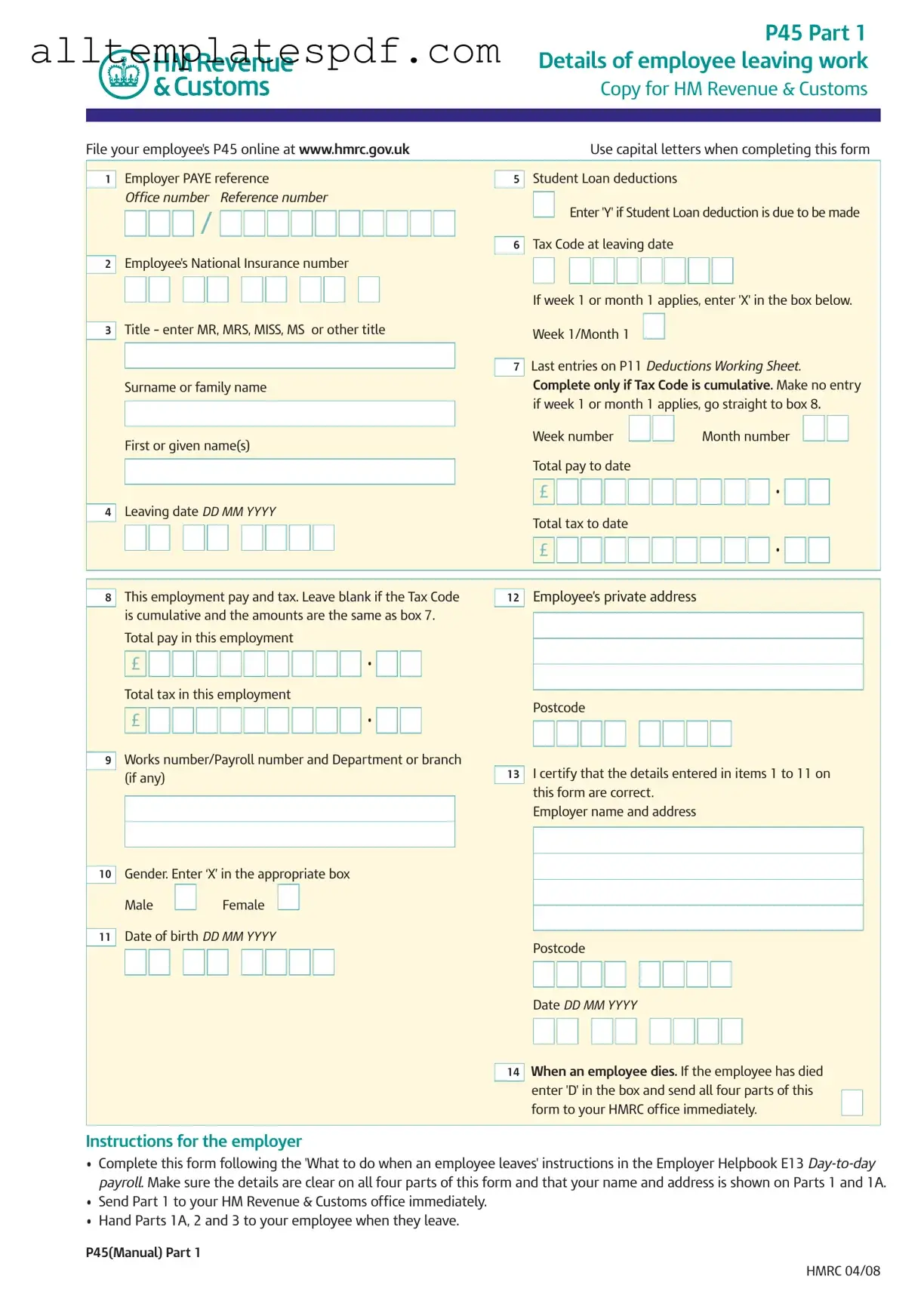Filling out the P45 form can be straightforward, but many people make common mistakes that can lead to issues later on. One frequent error is failing to use capital letters throughout the form. This is important because it ensures clarity and helps avoid misunderstandings. Legibility is key, especially when dealing with official documents.
Another mistake is not entering the correct PAYE reference number. This number is crucial for the employer and HM Revenue & Customs (HMRC) to track tax contributions accurately. Omitting or miswriting this number can delay processing and lead to tax complications.
People often forget to indicate whether a Student Loan deduction applies. If the employee is subject to such deductions, marking 'Y' in the appropriate box is necessary. Neglecting this step can result in incorrect deductions being made.
Many individuals also overlook the importance of the leaving date. This date should be filled in accurately to ensure that tax records reflect the correct employment period. An incorrect leaving date can lead to tax miscalculations and affect future tax returns.
Additionally, some people mistakenly skip the section for the employee's National Insurance number. This number is vital for tracking contributions and benefits. Leaving it blank can cause delays in processing the P45 and may affect the employee's entitlements.
Another common issue is failing to certify the details on the form. It’s essential to sign and date the certification section to confirm that the information provided is correct. Without this certification, the form may not be accepted by HMRC.
When it comes to the tax code, individuals sometimes forget to check if it is cumulative. If the tax code is cumulative, it should be clearly noted. Misunderstanding this can lead to incorrect tax calculations.
Lastly, many people do not keep a copy of the P45 for their records. This form is important for future tax returns and any claims for tax refunds. Keeping a copy helps ensure that all necessary information is available when needed.
